News
An interview with Keith Cutten, author of “The Evolution of Golf Course Design”
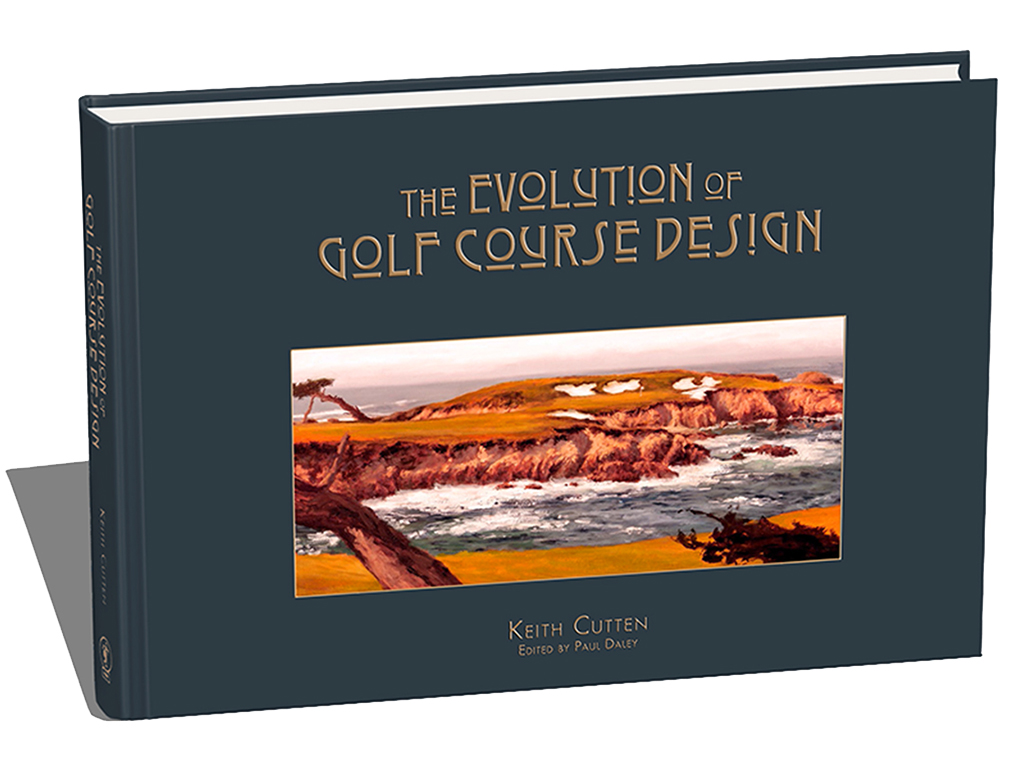
This interview is with Keith Cutten, author of “The Evolution of Golf Course Design,” which is a new book he is releasing to the public. This is an unbelievably well-researched and all-encompassing look at golf course architecture, how it has changed throughout history, and all of the variables in play that have shaped it over the course of time.
Let’s start with the easy stuff. What’s your personal background? How did you get into all of this?
Well, my passion for golf architecture started back in high school. I took a drafting and design curriculum all through high school, which was hugely beneficial. I was getting into golf around 15-16 years old and I lost my grandfather, who was the primary golf influence in my life. When he died, he left me his golf clubs, and I missed him so much I just dove completely head first into golf.
When I finished high school, I sat down with my dad to try to hash out a game plan to get into the golf industry. My dad was an environmental scientist for 40 years with the Ministry of Environment in Ontario, so he helped me a great deal in understanding the policy system here in Canada. I started by getting my bachelor’s degree from the University of Waterloo in Planning and Environmental Design. In my last coop term, I went for broke and I reached out to Rod Whitman in Canada, who invited me to do a 5-month coop with him during the construction of Sagebrush Golf & Sporting Club in British Columbia. The pay was paltry and I ran a shovel and a rake for most of the summer, but I fell in love with it instantly.
I later went back for my master’s in Landscape Architecture at the University of Guelph, which I finished in 2016. The culmination of that was my thesis, which has now become this book. Nowadays, I have my own company, Cutten Golf, Inc., which allows me to partner with people like Rod and Dave Axland, who has been Coore and Crenshaw’s chief project manager for 30 years. I couldn’t have walked into a better situation as a young, aspiring architect. To have the opportunity to work with these guys is incredible.
Having had the opportunity to peek at an advanced copy, I can say the book is completely fascinating. Talk a little bit about what compelled you to devote so much of yourself to this pursuit in the first place.
I’m the type of person that needs to answer my own questions to be satisfied. I’m not comfortable with just accepting things as fact without knowing the story behind them. I was sitting in one of my first master’s classes, which was basically a history of the landscape architecture profession. I’m learning how everything is influenced by society and wars and economy and I thought, “This has to be true for golf, but no one’s ever talked about it.”
At the time, I was also batting around ideas for my thesis. I was thinking a lot about the renovations that had recently been done to Pinehurst No. 2 and I was particularly curious about how Donald Ross’s original design was so much more environmentally sound than what it had been allowed to become over the course of time.
One of the key quotes that I got from Bill [Coore] about that project was that they were not trying to be “environmental crusaders” so much as they were just trying to put the course back to the way Donald Ross had originally intended it. So the question I kept asking in my head was, “How did this happen?” I sort of went on a fact finding mission to uncover how golf course architecture changed and it kept snowballing. I just kept following leads in different directions that began to connect all the dots for me. I went a little deeper down the rabbit hole every day, and ended up with a 600+ page thesis to turn in.
Just to paint a quick picture for the readers as to what’s going on in the book, there’s two main sections to it. The first section is going through history decade by decade starting with the early origins of golf, then 1830s, 1840s, and so on. I don’t want you to give too much of your book away, but give people a taste for what’s going on there.
Essentially, there’s a lot of short little blurbs about historical context that I try to quickly tie into golf. I suppose you’d have to start with the Victorian era, which was the first attempt at going away from the “links” style of architecture. When people from urban areas (say London) found golf and wanted to play it, they wanted to create their own courses so they wouldn’t have to travel over to St Andrews. So, the professional golfers of the time built what they could. The only people that were doing construction of the landscape at that time were the crews that were building state homes for the ultra-wealthy in the Victorian style. So they wound up with golf courses that were built much the same way with features that were geometric and square. They looked nothing like the links courses of Scotland.
After that, there was then a shift into what’s called the Arts and Crafts movement that takes you into the 1910’s. WWI had a huge impact at that time. Britain was basically devastated after WWI, so a lot of architects fled to the US, the land of opportunity, which led to what we now call the Golden Age of golf course architecture.
Shortly after that period, you have the Great Depression and WWII, where all of this knowledge that had been built really just comes to a halt. After going through the Great Depression and WWII, society really didn’t want to think about the past. There was no fondness for what had been done, so modernism became the way of life for basically everyone at that point, including golf course architecture.
Most of the big name architects (Ross, Mackenzie, etc) started their careers back in England before WWI, so when you get to WWII, those guys are all either dead or retired. It was a perfect storm which basically took golf in a completely different direction.
The second part of the book is profiles on golf course architects, authors, and visionaries. So you go from Old Tom Morris to Geoff Shackelford and everywhere in between. Given how much time you’ve invested in this, I’m curious to know who you would put on the Mount Rushmore of architects and why?
I’m going to flavor this with my own personal bias, but for me number one has to be Harry Colt. He’s so brushed over in North America it’s crazy. He pioneered what golf course architecture is, which is combining strategy and naturalness. Colt’s influence can be seen in work of Dr. Alister MacKenzie (Australia and America), Hugh Alison (Japan), Stanley Thompson (Canada) and Donald Ross (America). His influence just can’t be overstated in my opinion.
Stanley Thompson would have to be my next choice. Especially since I’m Canadian. His projects have defined great golf here, and his influence on me was immense.
Third would be Bill Coore. Without Sand Hills, I don’t think we are where we are today when it comes to golf course architecture. I don’t think anyone is reading my book and I doubt I’m even writing if it wasn’t for Bill. I think he’s the Alister Mackenzie of our time.
Last would be Rod Whitman. He just doesn’t get the notoriety or the acclaim that he deserves in my opinion. Bill Coore sings Rod’s praises all the time. He even gives Rod credit for figuring out how to make his routing work at Friar’s Head. I’ve learned so much from Rod and a lot of my passion for architecture comes from him.
If you had the opportunity to sit down with one of these people (dead or alive) you profiled over dinner, who would it be and what questions would you ask them?
I think it’d have to be Stanley Thompson. He was the type of guy that was notoriously larger than life. It’s rumored that he made and spent multiple fortunes in his lifetime according to his biography. He’s the type of guy that could sell the Canadian rail lines on the idea that they should build a golf course up here in the middle of nowhere because it’d be good for their business. I just think if he’s anything at all like what those stories would lead you to believe, that’d be a hell of a dinner.
I do want to ask about one specific aspect if you don’t mind because I personally find it super interesting and I think our readership would as well. Can you talk a little bit about the relationship between golf course equipment and architecture? Let’s kind of go down that rabbit hole for a minute.
I think the biggest misconception is that Golden Age architects never saw these kinds of advances in equipment coming. They did. They experienced their own advancements with equipment. The Golden Age didn’t start in the US in the 20s and 30s. Those same guys were designing courses in England in 1910 and prior to that, so they had already seen advancements of their own. They did react to them very differently than what has been done up until the last 10 years, however. They used the contour of the ground and width and angles in such a way that if you didn’t play to the right area of the fairway, you didn’t have a shot. The way they combated length is to put an emphasis on placing your shot in the right location instead of just pounding it down there as far as you can.
Even back then, there were some instances where people could hit 300-yard drives because you have to remember this was before irrigation. This brought the ground game into play. It wasn’t lawn darts where you hit every shot a certain distance and stopped it on a dime. Even though a long hitter might be able to get a drive out there 300 yards, that shot likely wound up in a pot bunker if you weren’t super precise with it. Back then, it was so much more a three dimensional game where you had to think about all the little humps and bumps and what they might do to the golf ball after it landed. The Golden Age architects were already thinking about this stuff when they designed their courses.
For a long time, we basically forgot our own history. Everyone after WWII just tried to reinvent the wheel by pinching landing areas and growing the rough taller, which was terrible for golf. We’re relearning, though, that combating length isn’t done by making courses longer and narrower; it’s done by making them shorter and wider. I think we need to start showing a bigger variety of golf courses on television. I think the tour is doing that with places like Trinity Forest, but they need to stop listening to the whining of players. That cannot be our measuring stick for whether or not a course is good.
Right or wrong, what gets shown on TV is what gets exported everywhere. One of the messages with my book is that that has to stop. Every course should not aim to be Augusta. They should aim to be what they are, and that requires completely understanding and committing to what that is.
Lastly, give us a call to action. Tell us how to get in touch with you and learn more.
Sure! To learn more about me, my business, or my book, the best way to do that is to visit my website www.cuttengolf.com. @cuttengolf is my handle for both twitter and Instagram.
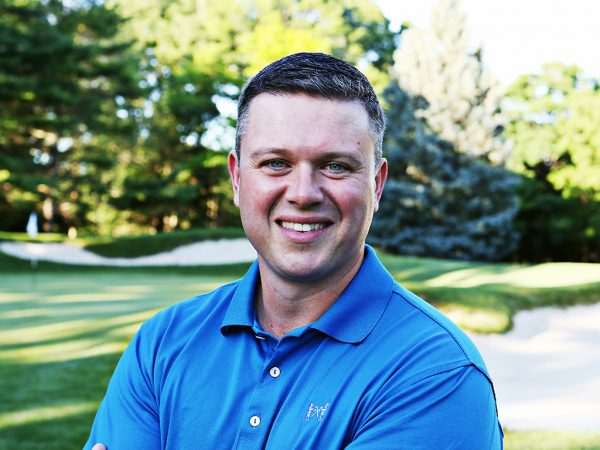
Keith Cutten, author of The Evolution of Golf Course Design
- LIKE66
- LEGIT4
- WOW4
- LOL2
- IDHT0
- FLOP1
- OB1
- SHANK1
Tour Photo Galleries
Photos from the 2024 CJ Cup Byron Nelson

GolfWRX is on site this week in McKinney, Texas, at the 2024 CJ Cup Byron Nelson (FKA the AT&T Byron Nelson).
Last year at TPC Craig Ranch, Jason Day ended a five-year winless streak. J-Day is in the field again, as are Jordan Spieth, Tom Kim, and Will Zalatoris.
We have our usual assortment of general galleries, WITBs, and pullout albums for your perusal. As always, we’ll continue to add links to additional albums as they make their way to us from the Lone Star State.
Check out links to all our photos below.

General Albums
- 2024 CJ Cup Byron Nelson – Monday #1
- 2024 CJ Cup Byron Nelson – Monday #2
- 2024 CJ Cup Byron Nelson – Tuesday #1
- 2024 CJ Cup Byron Nelson – Tuesday #2
- 2024 CJ Cup Byron Nelson – Tuesday #3

WITB Albums
- Pierceson Coody – WITB – 2024 CJ Cup Byron Nelson
- Kris Kim – WITB – 2024 CJ Cup Byron Nelson
- David Nyfjall – WITB – 2024 CJ Cup Byron Nelson
- Adrien Dumont de Chassart – WITB – 2024 CJ Cup Byron Nelson
- Jarred Jetter – North Texas PGA Section Champ – WITB – 2024 CJ Cup Byron Nelson
- Richy Werenski – WITB – 2024 CJ Cup Byron Nelson
- Wesley Bryan – WITB – 2024 CJ Cup Byron Nelson
- Parker Coody – WITB – 2024 CJ Cup Byron Nelson
- Peter Kuest – WITB – 2024 CJ Cup Byron Nelson
- Blaine Hale, Jr. – WITB – 2024 CJ Cup Byron Nelson
- Kelly Kraft – WITB – 2024 CJ Cup Byron Nelson
- Rico Hoey – WITB – 2024 CJ Cup Byron Nelson
Pullout Albums
- Adam Scott’s 2 new custom L.A.B. Golf putters – 2024 CJ Cup Byron Nelson
- Scotty Cameron putters – 2024 CJ Cup Byron Nelson
- Ben Griffin playing Maxfli golf ball

See what GolfWRXers are saying in the forums.
- LIKE9
- LEGIT0
- WOW0
- LOL0
- IDHT0
- FLOP0
- OB0
- SHANK1
News
Vincenzi’s 2024 CJ Cup Byron Nelson betting preview: International talent to shine
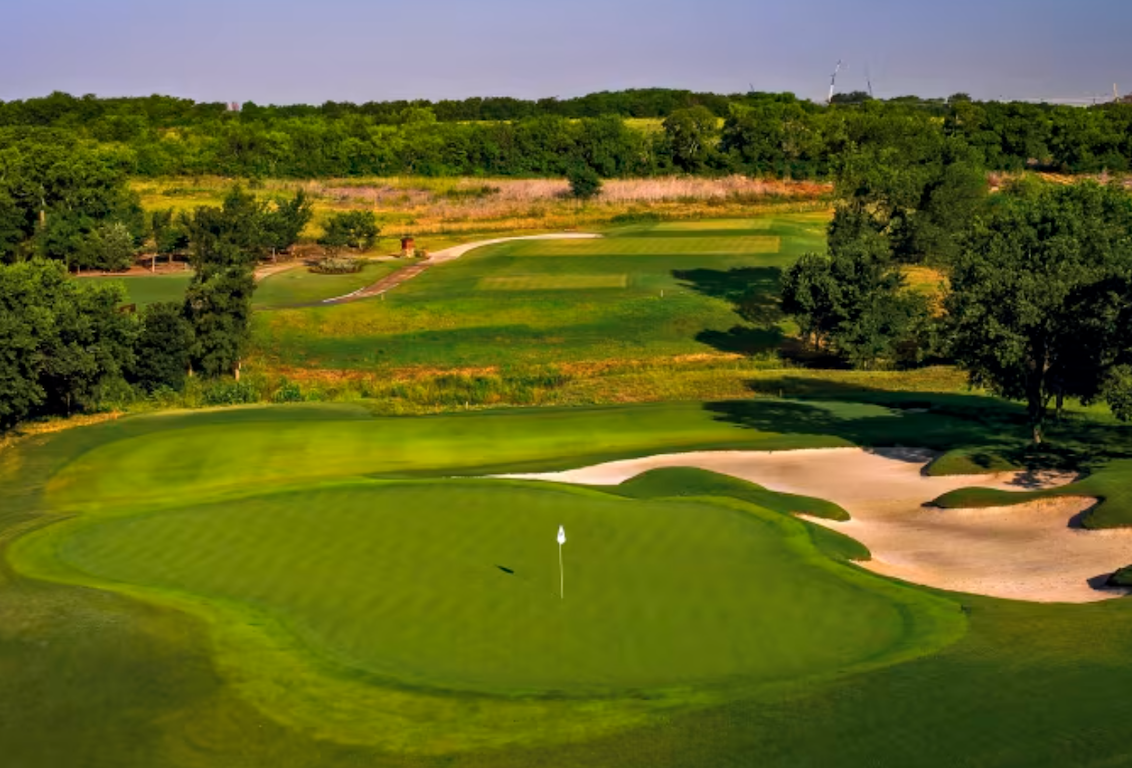
As anticipation mounts for the 2024 PGA Championship at Valhalla in a few weeks, the PGA Tour makes a pit stop in McKinney, Texas to play The CJ CUP Byron Nelson.
Last year was the third time TPC Craig Ranch hosted the Byron Nelson. Prior to 2021, the event was held at Trinity Forest Golf Club in Dallas.
TPC Craig Ranch is a 7,414-yard par-71 that features Bentgrass greens. The event historically plays relatively easy, and that has remained the case in the three editions at TPC Craig Ranch.
The course structure may provide some additional intrigue with the par-3 17th featuring a stadium setup called “Ranch 17” which is reminiscent of the 16th hole at TPC Scottsdale. The course also has both long and difficult par-4s mixed with drivable par-4s, which should create some exciting moments.
There are 156 golfers in the field this week, and many stars will be taking the week off to prepare for 2023’s second major championship in a few weeks and a “signature event” at Quail Hollow next week. Notable players in the field include Jordan Spieth, Jason Day, Sungjae Im, Stephan Jaeger, Tom Kim, Si Woo Kim, Min Woo Lee, Alex Noren, Adam Scott and Will Zalatoris.
Past Winners of the AT&T Byron Nelson
- 2023: Jason Day (-23 at TPC Craig Ranch)
- 2022: K.H. Lee (-26 at TPC Craig Ranch)
- 2021: K.H. Lee (-25 at TPC Craig Ranch)
- 2019: Sung Kang (-23)
- 2018: Aaron Wise (-23)
- 2017: Billy Horschel (-12)
- 2016: Sergio Garcia (-15)
- 2015: Steven Bowditch (-18)
Key Stats at TPC Craig Ranch
Let’s take a look at five key metrics for TPC Craig Ranch to determine which golfers boast top marks in each category over their last 24 rounds.
Strokes Gained: Approach
Strokes Gained: Approach remains the best measure of current form.
Hot iron play will be at a premium this week. Last year, Jason Day gained 6.4 strokes on approach, which was fourth in the field. In 2022, K.H. Lee was ninth in the field in Strokes Gained: Approach, gaining 5.2 strokes. In his 2021 victory, he was second in the field and gained 8.3 strokes on the field in the category.
Strokes Gaines: Approach Over Past 24 Rounds
- Tom Hoge (+1.12)
- Keith Mitchell (+1.02)
- Henrik Norlander (+0.99)
- Ryan Moore (+0.98)
- Ben Martin (0.80)
Strokes Gained: Off the Tee
Fairways are wide at TPC Craig Ranch.
Distance will certainly be helpful, and there aren’t too many difficult holes on the course. Golfers who put themselves in position off of the tee this week should have a sizable advantage.
Strokes Gained: Off the Tee Over Past 24 Rounds
- Peter Kuest (+0.93)
- Kevin Daugherty (+0.91)
- Alejandro Tosti (+0.83)
- Keith Mitchell (+0.82)
- Kevin Tway (+0.74)
Birdie or Better %
There aren’t many hazards on the course, and all of the par-5s should be reachable in two for the majority of the players in the field. I am anticipating a birdie fest, and this statistic should be helpful in finding the birdie-makers.
Birdie or Better % Over Past 24 Rounds:
- Wesley Bryan (31%)
- Kelly Kraft (26.2%)
- Peter Kuest (25.9%)
- Matti Schmid (25.7%
- Jimmy Stanger (25.2%)
Strokes Gained: Putting (Bentgrass)
Many golfers on TOUR have some major putting surface variance in their statistics and prefer Bentgrass to other surfaces.
Bentgrass is common in Texas, and we often see golfers who play well in Texas continue to do so, finding a great feel around the greens.
Strokes Gained: Putting (Bentgrass) Over Past 24 Rounds:
- Maverick McNealy (+0.92)
- Aaron Baddeley (+0.87)
- Callum Tarren (+0.86)
- Harry Hall (+0.81)
- Nick Hardy (+0.69)
Course History
This statistic will tell us which players have performed the best at TPC Craig Ranch over the past three seasons.
Course History Over Past 12 Rounds:
- Jordan Spieth (+2.69)
- K.H. Lee (+2.59)
- Seamus Power (+1.84)
- Ryan Palmer (+1.76)
- Adam Scott (+1.72)
CJ CUP Byron Nelson Model Rankings
Below, I’ve compiled overall model rankings using a combination of the five key statistical categories previously discussed — SG: Approach (27%), SG: OTT (24%), Birdie or Better % (18%), Course History (17%) and SG: Putting Bentgrass (16%).
- Alex Noren
- Adam Scott
- Keith Mitchell
- Si Woo Kim
- Stephen Jaeger
- Jordan Spieth
- Jhonnatan Vegas
- Nate Lashley
- Brice Garnett
- Tom Hoge
2024 CJ CUP Byron Nelson Picks
Byeong Hun An +3000 (DraftKings)
Byeong Hun put together an excellent performance at The Masters, finishing T16, which ties his best ever finish at a major championship (also T16 at 2019 U.S. Open). The South Korean gained 9.16 strokes from tee to green, which ranked 2nd in the field behind only the champion, Scottie Scheffler.
An’s next start at Harbour Town didn’t go as well (67th), but he still had a fantastic ball striking week. The 32-year-old bled strokes both around and on the greens, which was his eventual undoing. In his past three starts, An has gained significant strokes on the field both off the tee and on approach.
Benny had a strong start at last year’s Byron Nelson, finishing in a tie for 14th. With limited challenges on the course, he shouldn’t have to do much scrambling. In his past 24 rounds, he ranks 17th in the field in Strokes Gained: Off the Tee and 17th in the field in birdie or better percentage. The putter is up and down per usual, but his ceiling putting weeks with his LAB Golf putter in 2024 are higher than they’ve been in past seasons.
An is starting to become my “white whale” of the PGA Tour, but I believe in his talent and TPC Craig Ranch is a course that should suit his excellent tee to green play.
Mackenzie Hughes +5500 (FanDuel)
Mackenzie Hughes is quietly putting together a very good season. He finished in a tie for 3rd at the Valspar Championship and followed that up with a T14 at the Texas Children’s Houston Open.
In his past 36 rounds in Texas, the Canadian ranks 5th in the field in Strokes Gained: Total. Last year, he finished in a tie for 14th at this event and gained strokes putting and off the tee. Mackenzie played well that week despite being in extremely poor form. He missed two cuts in a row prior to the event, and four consecutive cuts immediately after. His irons were off that week, but in 2024, we’ve seen an improvement in Hughes’ approach game. He now comes to the event playing some steady golf. He’s gained strokes on approach in four of his past five events and is hitting the ball very well from tee to green.
Hughes has two victories on the PGA Tour, both coming in relatively low-scoring affairs (-17 in each). He will need to go a bit deeper to win the CJ Cup Byron Nelson but has the type of putter that can keep pace in a birdie barrage.
Seamus Power +7000 (FanDuel)
After struggling over the past few seasons with injuries, Seamus Power seems as if he is rounding back into the form that made him a really consistent player on the PGA Tour.
Power finished T12 in his most recent start at the RBC Heritage, which is encouraging considering it was a “signature event” with a very strong field. For the week, the Irishman gained 4.4 strokes on approach and 2.8 strokes putting, which is the combination he’s used in the past to contend on Tour.
In his three trips to TPC Craig Ranch, Power is yet to finish outside of the top-20, with his best finish being a T9 in 2019. He ranks 4th in Strokes Gained: Total at the course. The 37-year-old thrives on easy tracks and has won in 2021 (Barbasol Championship) and 2022 (Butterfield Bermuda) on easier layouts with weaker fields.
Power has the game to go extremely low and I believe he can get back in the winner’s circle for the third time in four years.
Chan Kim +10000 (FanDuel)
Chan Kim has been striking the ball beautifully this season and is a proven winner with two wins on the Korn Ferry Tour in 2023 as well as eight career Japan Tour wins.
At last week’s Zurich Classic, Kim and his partner Doug Ghim finished in a tie for 28th. Prior to that, the South Korean T14 at the Valero Texas Open and T6 at the Corales Puntacana Championship. His success this season in Texas as well as he propensity to play his best golf on the PGA Tour’s easier courses make him and ideal fit for TPC Craig Ranch.
2024 has given plenty of longshot winners on the PGA Tour, and with a birdie fest like this, I believe there’s a strong chance we get another this week in McKinney, Texas.
Alejandro Tosti +10000 (FanDuel)
Alejandro Tosti is one of the most polarizing players on the PGA Tour thus far in the 2024 season. His antics can rub many the wrong way, but he’s shown on a few occasions that he has what it takes to compete in Tour events.
This season, Tosti has been elite off the tee. In his past 24 rounds, he ranks 2nd in Strokes Gained: Off the Tee. The Argentine hits it long and straight, which works at any course on earth. He got a taste of contention a few starts ago at the Texas Children’s Houston Open, finishing in a tie for 2nd place.
Tosti had a fantastic year in 2023 on the Korn Ferry Tour, where going low is a prerequisite to success. If this turns to a shootout, which it likely will, the 27-year-old has the ability to set the pace. Tosti will look to become the second Argentine to win in Texas in the past two seasons after Emiliano Grillo emerged victorious at last year’s Charles Schwab Challenge.
C.T. Pan +15000 (FanDuel)
Outside of a T3 at the Mexico Open, C.T. Pan doesn’t have strong results this season in terms of finishes. However, over his past two starts, Pan’s iron play has come alive. At The Players, he gained 6.6 strokes on approach. At the Valero Texas Open, he gained 3.7. At last week’s Zurich Classic, Pan and his partner Kevin Yu finished T28. For a player who can get extremely hot with his scoring clubs, I believe he’s playing better than the results have shown over the past month or so.
Last season, Pan finished 4th at TPC Craig Ranch and was spectacular across all the major stat categories. In his past 36 qualifying rounds, he ranks 16th in Strokes Gained: Total in Texas.
Pan has won on the PGA Tour at the RBC Heritage and is always a player that I believe has what it takes to win on a Sunday if he finds himself in contention.
- LIKE15
- LEGIT9
- WOW3
- LOL0
- IDHT0
- FLOP3
- OB0
- SHANK4
News
Morning 9: McIlroy, Lowry win Zurich | Green repeats on LPGA | Steele victorious down under
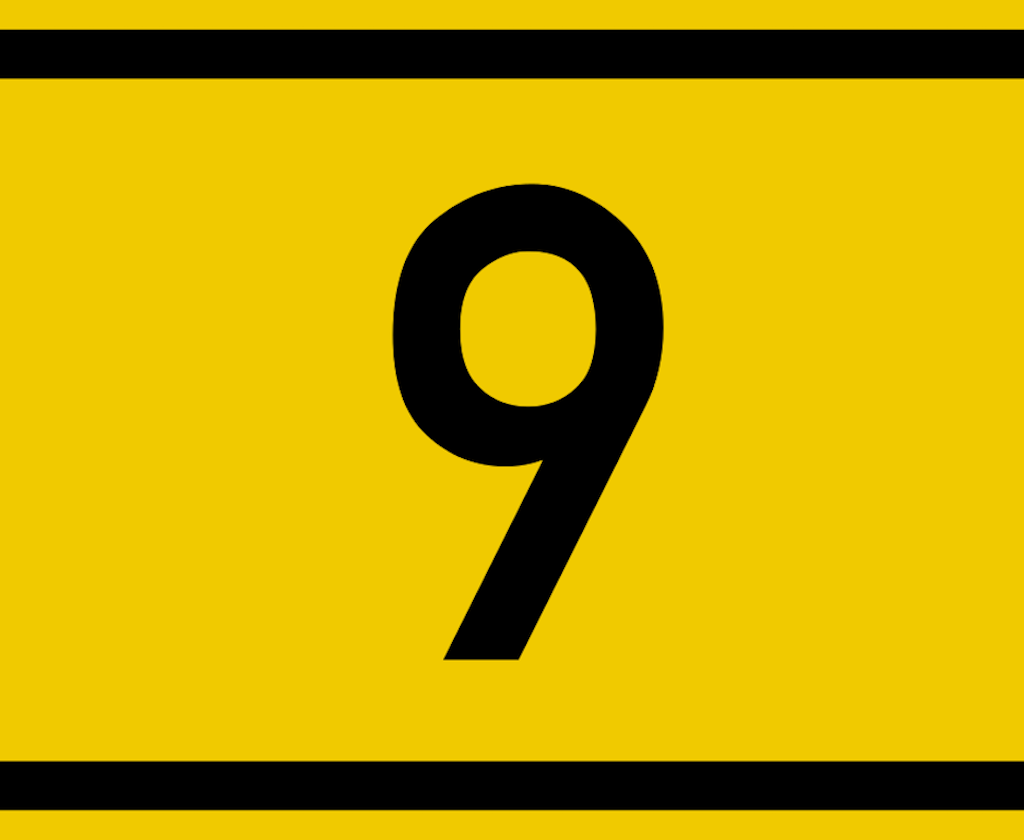
|
- LIKE1
- LEGIT0
- WOW0
- LOL0
- IDHT0
- FLOP0
- OB0
- SHANK0
-

 19th Hole1 week ago
19th Hole1 week agoJustin Thomas on the equipment choice of Scottie Scheffler that he thinks is ‘weird’
-

 19th Hole1 week ago
19th Hole1 week ago‘Absolutely crazy’ – Major champ lays into Patrick Cantlay over his decision on final hole of RBC Heritage
-

 19th Hole3 weeks ago
19th Hole3 weeks agoTwo star names reportedly blanked Jon Rahm all week at the Masters
-

 19th Hole2 weeks ago
19th Hole2 weeks agoReport: LIV Golf identifies latest star name they hope to sign to breakaway tour
-

 19th Hole2 weeks ago
19th Hole2 weeks agoNeal Shipley presser ends in awkward fashion after reporter claims Tiger handed him note on 8th fairway
-

 19th Hole2 weeks ago
19th Hole2 weeks agoBrandel Chamblee has ‘no doubt’ who started the McIlroy/LIV rumor and why
-

 Equipment3 weeks ago
Equipment3 weeks agoWhat we know about Bryson DeChambeau’s 3D-printed Avoda irons
-

 19th Hole6 days ago
19th Hole6 days agoLET pro gives detailed financial breakdown of first week on tour…and the net result may shock you













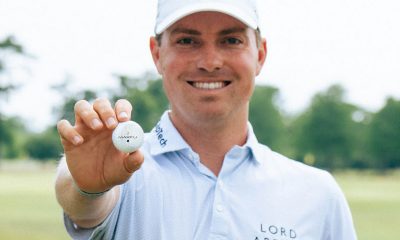














Chuck
Dec 27, 2018 at 4:00 pm
Well those are sure some interesting comments about advances in equipment technology and architecture.
15th Club
Fuggedabooitit
Dec 24, 2018 at 8:25 pm
Would you call the Extreme 19th Hole in South Africa an evolution? How about some of the Dye-abolical Pete type courses? Are they evolution or just mickey-mousing the silliness and taking it to stupid places that the terrain and the game itself can provide?
Dolla
Dec 23, 2018 at 8:34 pm
The last bit about the whining of players has nothing to do with it.
It’s to do with how many grandstands and concession stands and TV camera towers and positions can they fit on a course, along with the spectators they need to bring in to pay for a lot of things.
Space for all that stuff and a system to generate moneys is why you see a lot of the courses that you do.
Don’t just blame it on the course designs, don’t just blame it on what the players say.
Yes the Tour does set up courses for better scoring, and even the USGA has caved into that with all the rules changes to make it easier to do so.
But course designs you see on TV is mostly due to the amount of room the equipment needs to live and make room for the fans to be there, so they can support with their money
ogo
Dec 23, 2018 at 2:54 pm
Did the 19th and early 20th golf course architects deliberately create many water hazards into their designs?
I can see a water pond reservoir being part of a golf course, but to fill the course with water hazards seems psychologically masochistic and too punishing on the golfer losing expensive golf balls.
This also include dense undergrowth that is impossible to find errant golf balls. Why is punishing water and weeds included in golf course design?